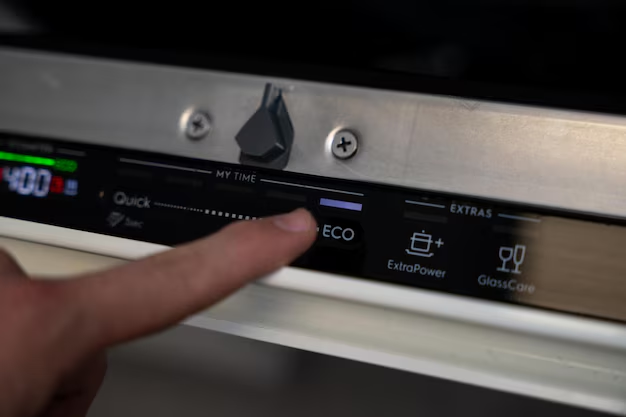Can a 4000-Watt Generator Power Your Refrigerator? Here's What You Need to Know
When the power goes out, homeowners often rush to ensure that their essential appliances stay running. One crucial appliance at the forefront of this concern is the refrigerator. The question often arises: Can a 4000-watt generator run a refrigerator? The answer, while seemingly straightforward, involves understanding a few technical details about wattage, appliance requirements, and generator capacity. Let’s dive into this topic and explore how you can keep your refrigerator running smoothly during an outage.
Understanding Your Refrigerator's Power Needs
Before addressing whether a 4000-watt generator is sufficient, it’s vital to comprehend the power requirements of your refrigerator. Most modern refrigerators require anywhere between 100 to 800 watts to run continuously. However, there’s a catch: they need extra power, called "surge watts," to start up. This surge can briefly require up to 1200 to 1500 watts depending on the model, especially if your refrigerator is an older model or has a larger freezer.
How Refrigerators Use Power
- Running Watts: This is the consistent electricity consumption while the refrigerator is in operation.
- Surge Watts: The additional watts needed to start the refrigerator. This kick-starts the compressor and other initial functions.
Understanding this difference is crucial as it affects the choice of generator and other appliances you might want to run simultaneously.
What Is a 4000-Watt Generator Capable Of?
A 4000-watt generator sits comfortably in the mid-range of portable generators in terms of power. These generators are prized for their versatility and ability to handle multiple small appliances and a few larger ones. Here’s a quick look at what a typical 4000-watt generator can power:
- Lighting: Several LED or CFL bulbs, often essential during blackouts.
- Refrigerator/Freezer: Typical models can be powered, taking into account both running and surge needs.
- Small Appliances: Such as microwaves, coffee makers, and televisions.
- Electronics: Chargers for phones, laptops, and other small devices.
Generator Considerations
When considering what a 4000-watt generator can handle, it's vital to understand its mechanics and how load is distributed:
- Total Capacity: A maximum of 4000 watts at any one time, without considering potential efficiency losses.
- Continuous Load: Generators perform optimally at about 80% of their maximum wattage for prolonged use.
- Multiple Appliances: Running several devices requires understanding their combined wattage and managing them efficiently.
Matching Your Generator to Your Refrigerator
Now let's put it all together. First, check your refrigerator’s user manual or the sticker inside the appliance to identify its wattage requirements. Remember to account for the higher wattage needed at start-up.
Steps to Ensure Compatibility
- Identify Refrigerator Wattage: Look at both running and surge wattage requirements.
- Assess Generator Capacity: Consider running the generator at around 80% capacity for longevity (around 3200 watts for a 4000-watt generator).
- Prioritize Appliances: If other appliances will also be used, ensure their combined wattage does not exceed the generator’s capacity.
- Simulate a Test Run: Prior to an actual power outage, test running the generator with your refrigerator and any other essential appliances to ensure compatibility and smooth operation.
Practical Generator-Usage Tips
- Fuel Efficiency: Ensure your generator is fuel-efficient and check the fuel gauge regularly.
- Routine Maintenance: Regular maintenance improves performance and extends the generator's life.
- Ventilation: Operate your generator in a well-ventilated space to prevent harmful carbon monoxide accumulation.
Managing Other Appliances and Loads
While the refrigerator might be your primary focus, a generator of this wattage can simultaneously handle other small appliances if managed properly. Here are some tips for optimally distributing the generator's load:
Load Management: Running high-wattage appliances like a dishwasher or an electric oven concurrently may not be feasible with a small generator. Prioritize your appliance usage and cycle between them if necessary.
Energy-Efficient Devices: Switch to energy-efficient appliances when possible to conserve wattage.
Power Scheduling: Run appliances in shifts according to priority to maximize the use of available power.
Beyond the Wattage: Generator Selection Criteria
While wattage plays a significant role in choosing a generator, consider these additional factors to ensure reliability and convenience:
- Portability and Noise Level: Look for easy-to-move models and those with acceptable noise levels for your environment.
- Engine Type: Opt for models with a robust engine for better efficiency.
- Durability and Warranty: Consider the construction and the warranty period as markers of long-term reliability.
- Startup Mechanism: Choose between manual pull-start and electric start based on convenience.
Summary: Keeping the Cold Chain Running
Here's a quick, visually engaging summary to help you weigh your options:
| Aspect | Key Insight | Emoji |
|---|---|---|
| Refrigerator Needs | Requires extra power for start-up | 🔋 |
| Generator Capacity | Operates best at 80% capacity (≈3200 watts) | ⚙️ |
| Load Management | Prioritize and cycle appliance usage | 🔄 |
| Maintenance | Regular checks enhance performance | 🔧 |
| Testing | Conduct test runs pre-outage for assurance | 🧪 |
Making It Work in a Power Outage
Ultimately, with the right understanding and equipment, a 4000-watt generator can comfortably keep your refrigerator running during unexpected power outages. It all boils down to knowing your fridge’s electric demands, understanding generator capacity, and smart load management. By following these guidelines, you'll be empowered to confidently maintain your household appliances, ensuring that food preservation isn’t a casualty of power failure.
Generators offer a bridge over power gaps, an essential lifeline to modern convenience that, when chosen wisely, can serve your household efficiently. Whether you're bracing for severe weather or dealing with unexpected outages, you’re now equipped to make informed choices that help keep the lights—and the fridge—on.
